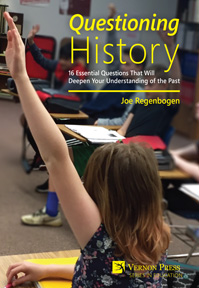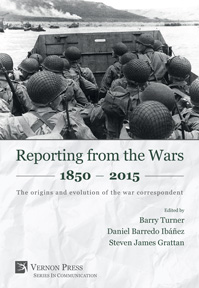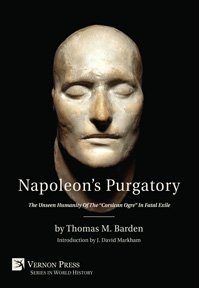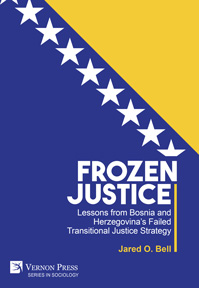Random Destiny: How the Vietnam War Draft Lottery Shaped a Generation
by Wesley Abney
Purchase this book
(click here to change currency)
In his scrupulous compendium of facts, Abney rightly faults the deliberately skewed Vietnam war draft system that favored the privileged and doomed others. In this vast generation of 27,000 million men, only 3 million served in the combat zone, so large numbers with deferments were spared. Instead, in 1966, during the largest call-up, and to avoid all out-campus revolt, McNamara’s heinous Project 100,000 lowered the mental test, creating the “Moron Corps” as they were called, who died in Vietnam in disproportionate numbers. The power in this book lies in vivid reminiscences of more than 160 men who answered a website request to recount the effect of the lottery on their lives.
Myra MacPherson
Author of the Vietnam classic, 'Long Time Passing: Vietnam and the Haunted Generation'
This is both a very interesting and very important book. First, it was of particular interest to me as someone who was subject to the first Vietnam-era draft lottery in December 1969 (#206; reclassified 1-A, but not drafted) when I was a 22-year old first-year graduate student. It helped me remember more clearly some of the details of my own experience with the lottery and allowed me to put its impact on my life in the context of other men who went through it. I think that the book will find a receptive audience among of those that generation for whom the lottery was a significant part of our coming of age.
Second, the book’s well-written and well-researched descriptive narratives of the draft, the lottery, and a range of cognate topics, together with the numerous excerpts from the personal recollections of men who were in the lottery pool that appear at the end of all but the first chapter combine to provide an important record of this formative period in modern American history. In constructing this record, the author has done an excellent job of drawing on an impressive variety of sources, including government documents, contemporaneous news reports, and scholarly analyses from several social science disciplines. I might add that I particularly appreciate the book’s sensitivity to the differential racial and socio-economic impact the draft and the lottery had on the young men affected by it.
Much of the factual material covered is available elsewhere, but the book presents it in a particularly thoughtful and refreshingly accessible manner. High school and college instructors (including me) who teach about the Vietnam War or America during the Vietnam War-era should find the book of great value. I would also highly recommend that high school, college, and public libraries add Random Destiny to their collections.
William A. Joseph,
Wellesley College, USA
'Random Destiny' is an important contribution to scholarship on the American Vietnam War. Anyone looking to understand young men’s experiences of the war through personal narratives can turn to excellent oral histories and memoirs of military veterans. Collections chronicling the choices of antiwar activists and men who fled the United States or went to prison are also available. But this book fills a hole by offering the stories of men who, for the most part, neither served nor actively protested. Instead, it uses the Vietnam War draft lottery, first instated in 1969, as a lens to examine the myriad ways Selective Service and the threat of the draft affected young men’s lives.
'Random Destiny' contains more than 160 personal accounts, obtained primarily through a website and arranged based on the draft classification each man received from his local draft board. Their stories are representative of one subset of American manhood. The men were overwhelmingly college educated and from a handful of states. They knew better than most how to work the system to their advantage. Not all succeeded in achieving the outcomes they wanted, but virtually all made or tried to make choices for themselves.
Their stories emphasize the capriciousness of the draft, the lottery that drove it, and the officials who administered it. Their lives changed for reasons beyond their control. Nonetheless, the men in this book worked incredibly hard to exert whatever control they could. Although most framed their stories around their randomly drawn lottery numbers , it’s nevertheless clear that most benefited from a system designed to privilege men just like themselves.
Amy J. Rutenberg
Department of History, Iowa State University
This book provides a concise but thorough summary of how the selective service system worked from 1965 through 1973, and also demonstrates how this selective process, during a highly unpopular war, steered major life choices of millions of young men seeking deferrals based on education, occupation, marital and family status, sexual orientation, and more. This book explains each category of deferral and its resulting “ripple effect” across society. Putting a human face on these sociological trends, the book also includes a number of brief personal anecdotes from men in each category, told from a remove of 40 years or more, when the lifelong effects of youthful decisions prompted by the draft have become evident.
There are few books which address the military draft of the Vietnam years, most notably CHANCE AND CIRCUMSTANCE: The Draft, the War and the Vietnam Generation, by Baskir and Strauss (1978). This early study of draft-age men discusses how they were socially channeled by the selective service system. RANDOM DESTINY follows up on this premise and draws from numerous later studies of men in the lottery pool, to create the definitive portrait of the draft and its long-term personal and social effects.
RANDOM DESTINY presents an in-depth explanation of the selective service system in its final years. It also provides a comprehensive yet personal portrait of how the draft and the lottery steered a generation of young lives into many different paths, from combat to conscientious objection, from teaching to prison, from the pulpit to the Canadian border, from public health to gay liberation. It is the only recent book which demonstrates how American military conscription, in the time of an unpopular war, profoundly influenced a generation and a society over the decades that followed.
Acknowledgments
Introduction
Chapter 1 The draft: a brief history
Chapter 2 Lottery night: the General’s last stand
Chapter 3 Taking the test
Chapter 4 Failing the test I-Y; IV-F
Chapter 5 Conscientious objectionI-A-O; I-O; I-W; IV-W
Chapter 6 Staying in school I-S; II-A; II-D; II-S; IV-D
Chapter 7 Working through the war II-A; II-C; IV-B; IV-D
Chapter 8 Family matters I-A; III-A; IV-A; IV-G 129
Chapter 9 Drafted I-A; I-A-O
Chapter 10 Volunteers I-C; I-D
Chapter 11 Opposition
Postscript
Bibliography
Index
Appendix: Methodology
Wes Abney was subject to the first draft lottery of the Vietnam era in 1969. Having escaped the draft by virtue of a high lottery number, he completed a Bachelor of Arts degree at UNC-Chapel Hill, and then obtained a Juris Doctor from the UNC School of Law. After serving a year as a VISTA volunteer, he practiced civil law as a legal aid attorney for about 15 years, then with a small firm in North Carolina until retiring in 2014. He now teaches part-time. He started a website in 2008 concerning the personal and social effects of the military draft in the Vietnam era, which has thus far collected over 800 stories of men whose lives were changed by the threat of the draft. Since 2008 he has studied relevant books, articles, records, statistical studies and other sources concerning the military draft system of 1965 through 1973.
Vietnam war, draft lottery, conscription, selective service, channeling
See also
Bibliographic Information
Book Title
Random Destiny: How the Vietnam War Draft Lottery Shaped a Generation
ISBN
978-1-62273-196-1
Edition
1st
Number of pages
262
Physical size
236mmx160mm

![Random Destiny: How the Vietnam War Draft Lottery Shaped a Generation [Hardback]](/file/6136/b86d28832953ddea428b68c7bb291742/1529656285.jpg)







